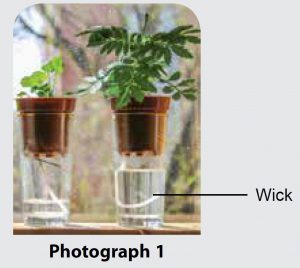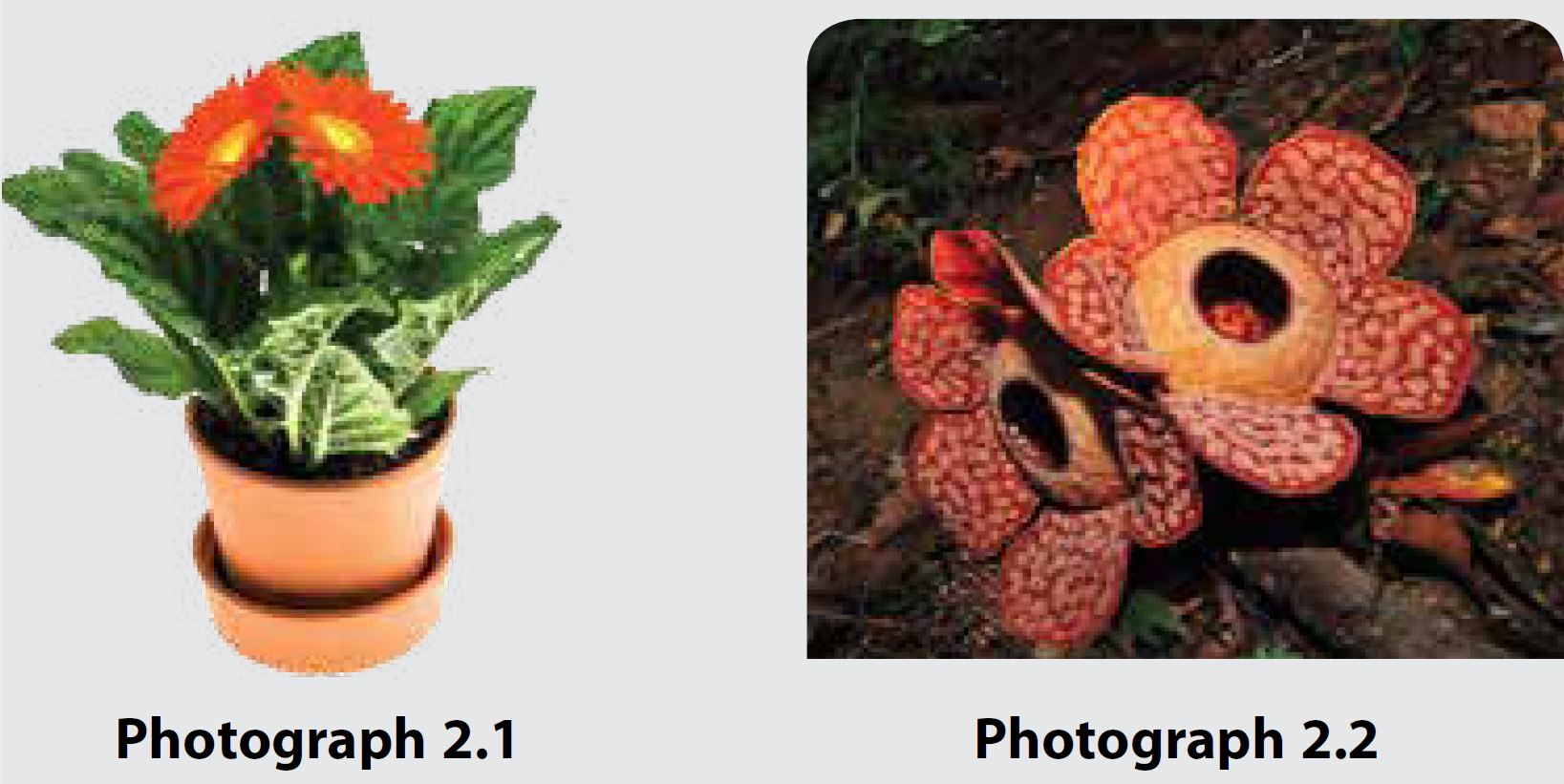Mr. Ali uses a technique shown in Photograph 1 for his herb plants. He uses wicks immersed in a nutrient solution to fulfil the needs of his plants.

(a) What is the technique used by Mr. Ali?
(b) State four basic needs of plants to ensure Mr. Ali’s plants grow well and healthily.
(c) Justify the usage of wicks in the technique used by Mr. Ali.
(d) Explain the root adaptations that enable the plants to obtain enough nutrients.
Answer:
(a)
Hydroponics
(b)
Water, light, nutrient and air
(c)
The wick is used to absorb water and nutrient from the nutrient solution. A wet wick ensures that roots receive enough water and nutrients.
(d)
This method is suitable for herbs and small plants. These type of plants have a fibrous root system to ensure maximum absorption of water and nutrients.
Photograph 2.1 and Photograph 2.2 show two types of plants which can be found in a tropical rainforest ecosystem. Both of these plants carry out different modes of nutritions. The plant in Photograph 2.1 can produce their own food by photosynthesis whereas the plant in Photograph 2.2 depends on other plants for nutrition.

(a) State the role of the plant in Photograph 2.1 in a tropical rainforest ecosystem.
(b) Explain the importance of the plant in Photograph 2.2 in a tropical rainforest ecosystem.
(c) Explain the differences of nutritional adaptations of both plants.
Answer:
(a)
The plant in Photograph 2.1 is a producer in food chains and provide food to consumers in the rainforest ecosystem.
(b)
The plant in Photograph 2.2 is a parasitic plant that can change the physical environment around them such as water and nutrients in the soil. Its host will absorb more water and nutrients from the soil causing the change in the supply of sources of the surrounding organism. The interaction between the parasitic plants and the host can also maintain the flow of energy and ecosystem balance in tropical rainforests.
(c)
The plant in Photograph 2.1 has chlorophyll. This plant produces its own food by synthesising complex organic compounds from simple inorganic materials through photosynthesis. The plant in Photograph 2.2 does not have chlorophyll, so this plant unable to carry out photosynthesis. This plant absorbs water and nutrients from the host plant. Its roots penetrate the stem of the host to the vascular bundle.
Studies show that organic crops contain more nutrients as compared to normal crops but there are studies that show there is no difference in nutrient content for both crops. As an agricultural officer, justify this information.
Answer:
Organic crops are crops that are free from synthetic fertiliser and artificial hormones. Apart from being chemical-free, organic crops also contains more antioxidants, minerals and vitamins. This is because, organic farming does not use pesticides.